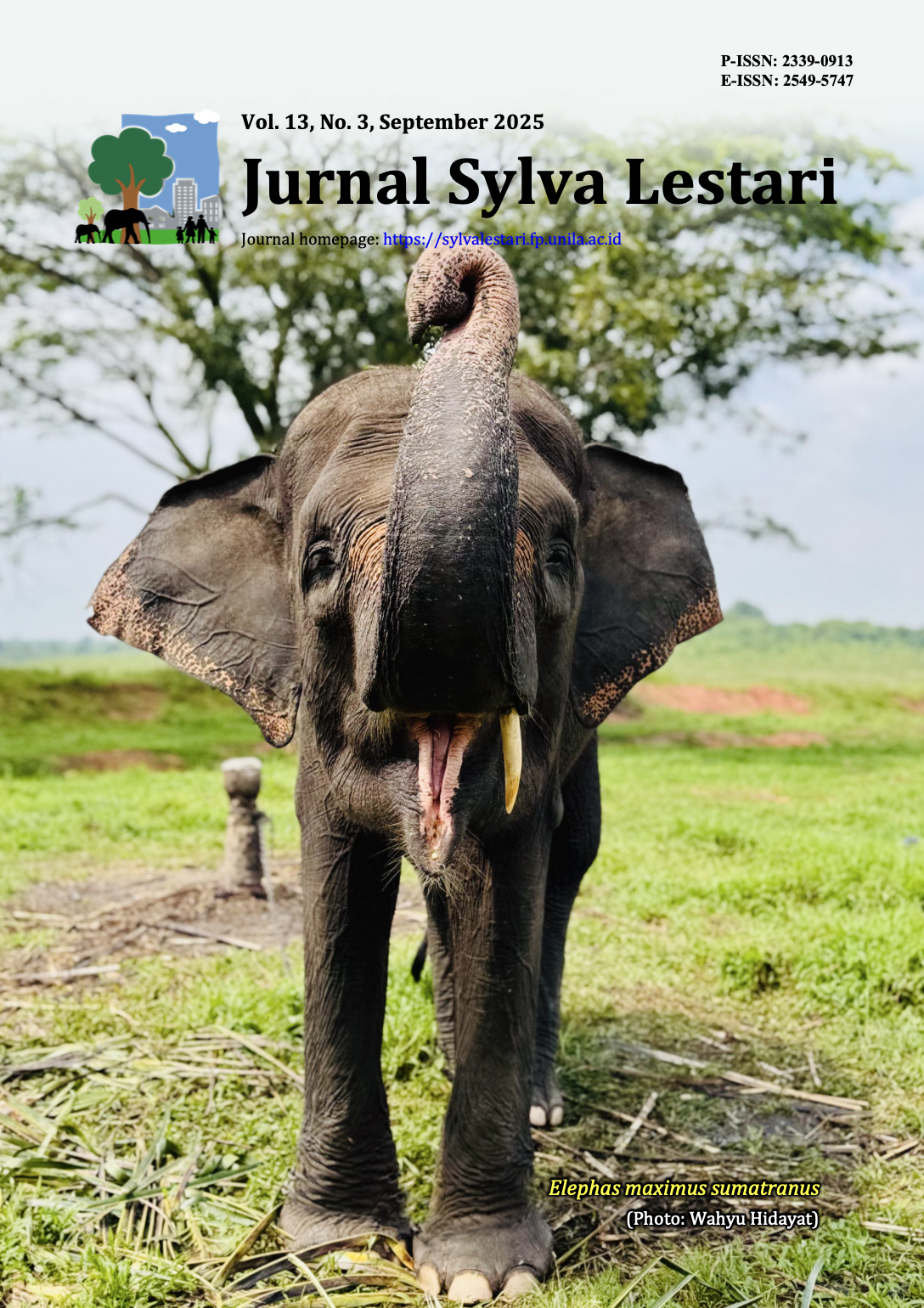Clustering Residents’ Attitudes Toward Human-Wildlife Conflict: A Case Study of Neighboring Communities in Paliyan Wildlife Sanctuary, Indonesia
DOI:
https://doi.org/10.23960/jsl.v13i3.1119Abstract
Understanding the heterogeneity of community opinions on human-wildlife conflict is crucial for developing effective mitigation strategies. This research investigates the attitudes and behaviors of residents surrounding Paliyan Wildlife Sanctuary in Indonesia, with a focus on their interactions with the long-tailed macaque (Macaca fascicularis) and the resulting human-wildlife conflict (HWC). By employing the attitude-behavior-context (ABC) framework, the research aims to identify and cluster different community groups by using K-means clustering analysis based on their perceptions of macaques, conservation initiatives, and the management of human-wildlife conflict. We identified distinct clusters of residents, classified by their positive and negative attitudes, degree of support for wildlife conservation initiatives, their perceptions of the sanctuary’s management, and the intensity of conflicts they experience with macaques. The “Conditional Conservation Supporters” exhibit less trust in wildlife managers and comparatively greater support for conservation, while underscoring the necessity for successful conflict resolution. In contrast, the “Disillusioned Critics” display less faith in conservation authorities, limited endorsement of existing management practices, and a pronounced inclination to regulate macaque populations. This research highlights the intricate interaction between human communities and wildlife conservation, highlighting the necessity of understanding local attitudes and behaviors in shaping conservation outcomes. The study provides policymakers and conservation practitioners with essential information for designing more customized and effective interventions that meet both the ecological requirements of wildlife and the social dynamics of local communities.
Keywords: forest-based ecosystem services, forest conservation, forest management, Macaca fascicularis, protected areas
Downloads
Downloads
Published
How to Cite
Issue
Section
Statistics
 Abstract views: 382 times
Abstract views: 382 times PDF downloaded: 256 times
PDF downloaded: 256 times
Metrics
License
Copyright (c) 2025 Prasetyo Nugroho, Lies Rahayu Wijayanti Faida, Wiyono, Eqia Masdya Yudhistira, Grenadiva Reskan Adhisty, Mochamad Fikri Nurul Hidayah

This work is licensed under a Creative Commons Attribution-NonCommercial 4.0 International License.
Authors retain copyright and grant the journal right of first publication with the work simultaneously licensed under a Creative Commons Attribution-NonCommercial 4.0 Licence that allows others to share the work with an acknowledgement of the work's authorship and initial publication in this journal.
Authors are able to enter into separate, additional contractual arrangements for the non-exclusive distribution of the journal's published version of the work (e.g., post it to an institutional repository or publish it in a book), with an acknowledgement of its initial publication in this journal.
Authors are permitted and encouraged to post their work online (e.g., in institutional repositories or on their website) prior to and during the submission process, as it can lead to productive exchanges, as well as earlier and greater citation of published work (See The Effect of Open Access).










